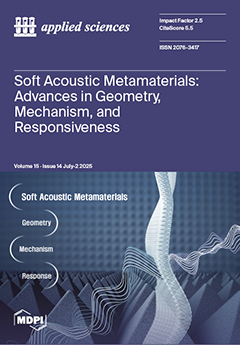Open AccessArticle
Establishing Linearity of the MOSkin Detector for Ultra-High Dose-per-Pulse, Very-High-Energy Electron Radiotherapy Using Dose-Rate-Corrected EBT-XD Film
by
James Cayley, Elette Engels, Tessa Charles, Paul Bennetto, Matthew Cameron, Joel Poder, Daniel Hausermann, Jason Paino, Duncan Butler, Dean Cutajar, Marco Petasecca, Anatoly Rosenfeld, Yaw-Ren Eugene Tan and Michael Lerch
Viewed by 857
Abstract
Very-high-energy electrons, coupled with ultra-high dose rates, are being explored for their potential use in radiotherapy to treat deep-seated tumours. The dose per pulse needed to achieve ultra-high dose rates far exceeds the limit of current medical linear accelerator capabilities. A high dose
[...] Read more.
Very-high-energy electrons, coupled with ultra-high dose rates, are being explored for their potential use in radiotherapy to treat deep-seated tumours. The dose per pulse needed to achieve ultra-high dose rates far exceeds the limit of current medical linear accelerator capabilities. A high dose per pulse has been observed as the limiting factor for many existing dosimeters, resulting in saturation at doses far below what is required. The MOS
kin, an existing clinical quality assurance dosimeter, has previously been demonstrated as dose rate independent but has not been subjected to a high dose per pulse. Within this study, the MOS
kins dose-per-pulse response was tested for linearity, with a dose per pulse as high as 23 Gy within 200 ns at the ANSTO Australian Synchrotron’s Pulsed Energetic Electrons for Research facility. While using EBT-XD film as a reference dosimeter, a dose rate dependence of the EBT-XD was discovered. Once confirmed and a correction factor established, EBT-XD was used as an independent reference measurement. This work presents confirmation of the MOS
kin suitability for ultra-high dose-rate environments with an electron energy of 100 MeV, and a theoretical discussion of its dose-rate and dose-per-pulse independence; the MOS
kin is the only detector suitable for both clinical quality assurance, and ultra-high dose-rate measurements in its standard, unmodified form.
Full article
►▼
Show Figures





